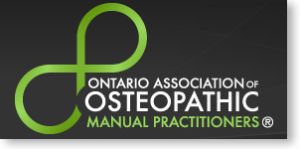Traditional Osteopathy, as presented by the Canadian College of Osteopathy, is defined as:“A natural medicine which aims to restore function in the body by treating the causes of pain and imbalance. To achieve this goal the Osteopathic Manual Practitioner relies on the quality and finesse of his/her palpation and works with the position, mobility and quality of the tissues.”
 Natural Medicine is a term used to convey the idea that with an osteopathic treatment, nothing is added (medications or remedies) or subtracted (surgery) from the body. Instead, the osteopathic philosophy embraces the notion that the body is naturally able to heal itself. The practitioner of Traditional Osteopathy works with the body to enhance this natural ability to self-regulate and self-heal.
Natural Medicine is a term used to convey the idea that with an osteopathic treatment, nothing is added (medications or remedies) or subtracted (surgery) from the body. Instead, the osteopathic philosophy embraces the notion that the body is naturally able to heal itself. The practitioner of Traditional Osteopathy works with the body to enhance this natural ability to self-regulate and self-heal.
Palpation (sometimes referred to as listening) is a diagnostic skill that the Osteopath uses to feel or sense the state of the tissues or systems being examined. This senseencompasses the many sensory aspects of touch, such as the ability to detect moisture, texture, temperature differential, and subtle motion. This ability to detect almost imperceptible motion, provides the Osteopathic Manual Practitioner with the capability of perceiving the inherent motion present in all living organisms. This palpatory ability is not a gift—rather it is a trained skill that takes years to develop.
Osteopathic Manual Practitioners palpate by a gently yet intentionally touching the tissues or systems under examination. With experience Osteopathic Manual Practitioners learn to palpate not just superficially but also very deeply within the body. This sensory information is received through touch receptors on the fingertips and palms, and through the proprioceptors (motion and position sensors) embedded deep in the joints of the hands, wrists, arms, and even in the shoulders.
The ability to detect minute modifications in the quality of the tissues is the assessment skill that allows the Osteopathic Manual Practitioners to help prioritize a patient’s course of treatment. These tissue qualities include, congestion, dehydration, scarring, stiffness, density or loss of resilience, as well as motility that is an infinitesimal movement inherent to all living tissues. It is this sensing of the quality of the tissue, in combination with the position, mobility and vitality of the tissues, that allows the Osteopathic Manual Practitioners to determine the tissues or systems that need immediate attention.l living tissues. It is this sensing of the quality of the tissue, in combination with the position, mobility and vitality of the tissues, that allows the Osteopathic Manual Practitioners to determine the tissues or systems that need immediate attention.




